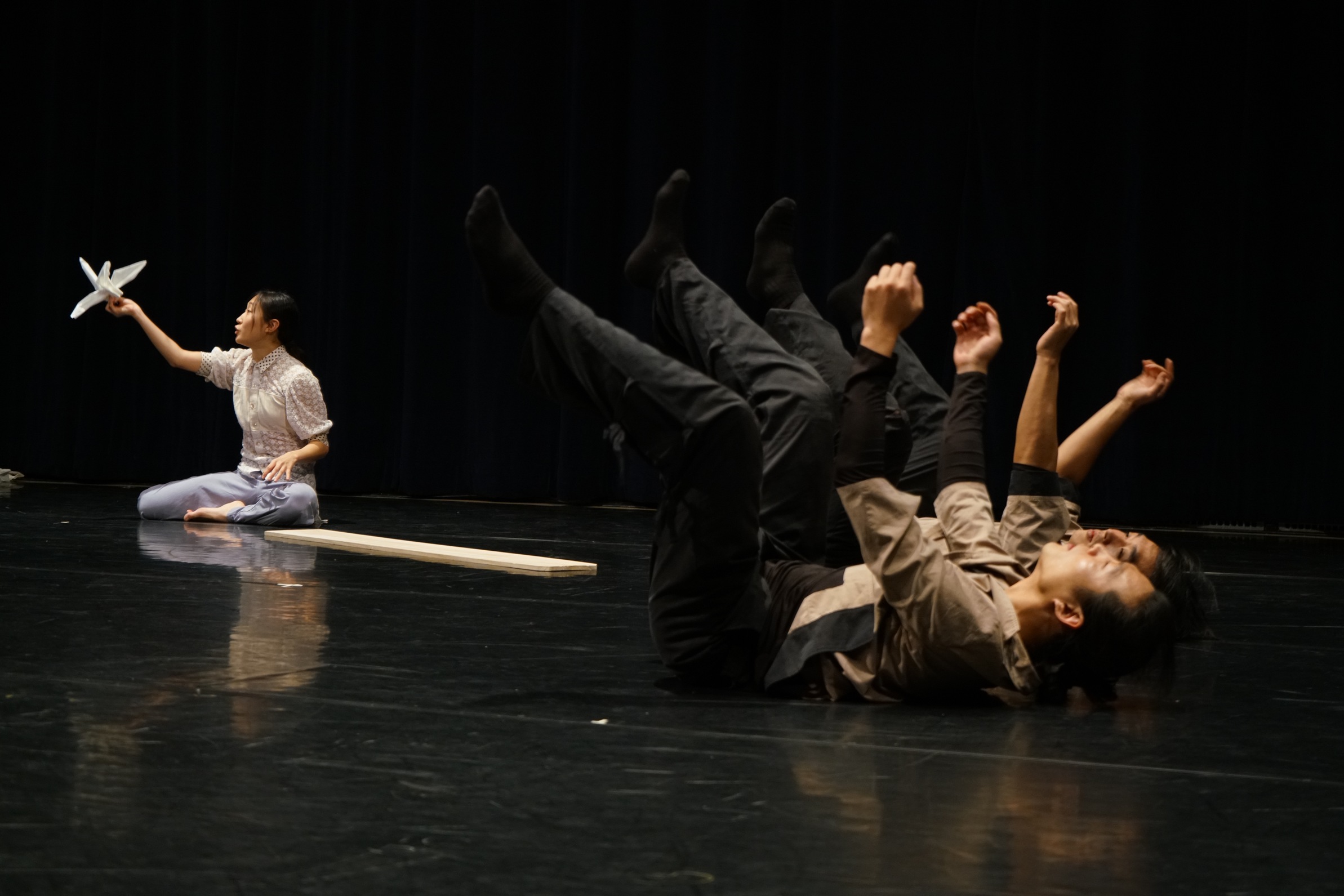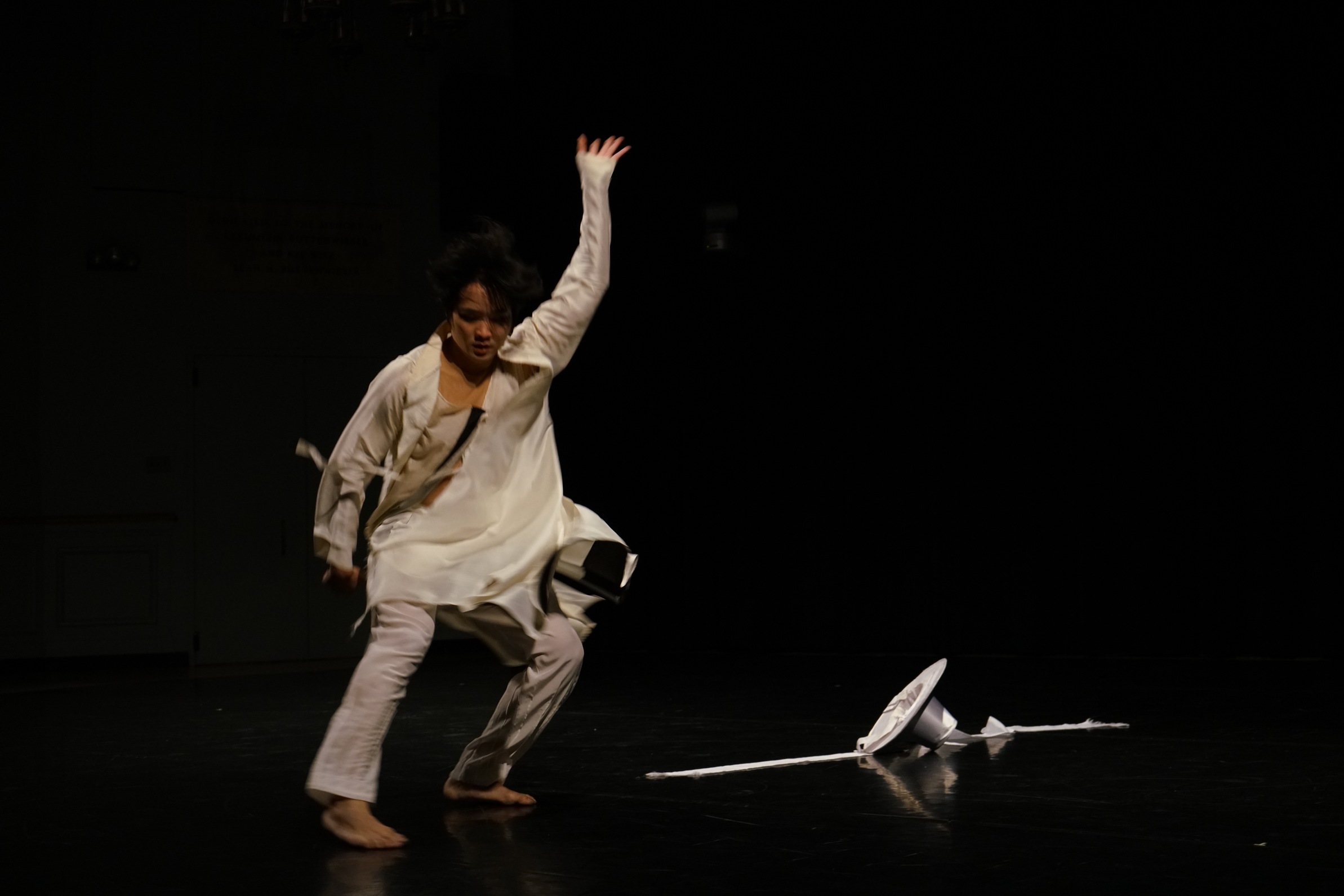Article By Tatiana Ho
On December 18th, the Harkness Dance Center and DIG Dance presented a collection of work showcasing Korean dance titles “Dancing Korea”. The event host a variety of contemporary works form well known dancers and choreographers Goblin Party, Ju Bin Kim, Youn Puluem, Won Kim, Moonsuk Choi, Suksoon Jung, Moon Ei Lee, Eun-Me Ahn and many more. As a showcase of contemporary concepts, the stage was covered with contemporary dances representing otherworldly topics. Stated to transcend “tradition and modernity”, Dancing Korea presented a three day weekend event that left the audiences in a state of wonder.
The first piece was a work for the Goblin Party titled “I Go”. The dance, which originated from a 2011 premiere at the Arko Arts Theater, was inspired through personal experiences of dancer Jinho Lim. Lim attempts to answer the questions based on death that appeared at a job as a Funeral Director. The dance begs to answer one big question “How does one die?” with the presentation of three dancers acting out the different elements of death as seen by society. Through compilation of the different interpretations of death, the dance ends with one certain answer: death is a cycle of beginning and end. Lim leaves the audience pondering the concept that death is the end of life but also the beginning of something else that we may never know.
Second was a dance choreographed by Ju Bin Kim titled “A Possessed Shaman”. The dance was performed by Ju Bin Kim alone and his expression of what a possessed Shaman is like. Although there are no answers to the dance, it presents a light of the Shaman fighting against the natural struggles of a human being, the fight against lust, vanity, gluttony, and greed. In this way, the Shaman is not possessed in the sense of an unwanted host within his body, but he is possessed by worldly desires of the flesh. Kim entertains the audience with rigid music and fluid dance moves that contradict each other. The collection of music, ranging from sound effects to soft rock, all halt abruptly creating the confusion and angst the Shaman is going through to the viewers themselves.
The third dance, titles “Hae Won” by Moon Ei Lee, is the most traditional of the three. The dance holds tradition with Sungchunmu, a ritual that is performed by shamans. Through this dance there is suppose to be a presentation of the connection between God and Man, which is the purpose of the shaman. Youngdatmalee was also a dance presented within the choreography. It is saud to release sprits after death while also absolving them from regrets. It is said to be the “sail of the spirit”, a way to put the lost souls to rest after an untimely demise. The last dance presented in “Hae Won” was one called Salpurichum. Salpurichum is said to be a way to take away “bad luck” or misfortune from the “blessed people”. Considered to be one of the most extremely beautiful folk dances, the dance is regarded in the highest quality and religious standpoint.
Last was a dance titled “Woman on the Road”. Choreographed by Puluem Youn, the dance is an attempt to find belonging in a world that one feels out casted in. The dance breaks the notion that everyone person is suppose to feel a sense of belonging within their homes and society and asks the question, “Where do I belong once my beliefs and ideas of the world change?” The dance is a representation of the concept of individualism in a world that wants to assimilate automatically. Youn presents the concepts of others ideas and philosophies and whether it is to hold these ideas to our own personal philosophies. The dance is ended with the realization that one cannot judge differing ideas to their thought of what is considered right or wrong, but they must accept these differing ideas as part of the world as a whole. In other words, the world is made up of individualism that should not be judged but accepted as that persons philosophy.
More Information:
The Goblin Party is made after the Korean Goblin that is said to enchant people with magical abilities. In this way the Goblin Party attempts to ‘enchant’ their audiences with beautiful dances. The company originated in 2007 and prides itself with a diverse set of dances and humoristic practices.
Jubin Kim Contemporary Project- Presenting with emphasis on traditional dance, Jubin Kim is set on genre defying dances that transcend tradition and modernism. His collection of media, narrations, and photography serve as his own personal signature to his contemporary works.
Moon Lei Dance Group- Moon Lei likes to place emphasis on freedom: freedom to thoughts, ideas, and personal beliefs. The dance group challenges the audience to look at the world as it is presented without any bias. In this way, Moon Lei attempts to enlighten it’s audiences with new and refined thinking and concepts.
Youn Puluem Project Group- Youn Puluem prides itself with beauty to explain the relationships between human beings. Known for utilizing its space, Puluem presents concepts in a fit of beauty, allows for others to be enthralled in majestic dance forms. Youn Puluem has won the Grand Prix prize in 2011 and the Modern Dance Promotion of Korea prize in 2012.




Leave a Reply